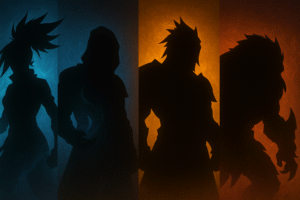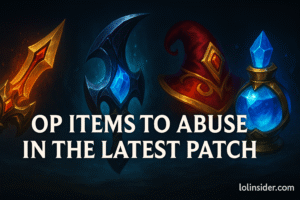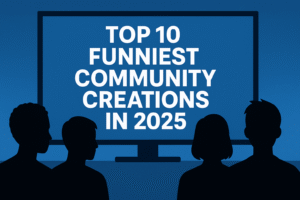For years, North America’s reputation in international League of Legends was shaky. Fans joked about NA being the “meme region,” overshadowed by Korea, China, and Europe in terms of skill, infrastructure, and results. But the tides are shifting. Over the past few seasons, North America has steadily improved—investing in infrastructure, nurturing homegrown talent, and even upsetting powerhouses on the global stage.
This article dives into the rise of North America in international LoL, exploring how the region evolved, what changed in its competitive ecosystem, and why fans believe NA is finally ready to challenge the world’s elite.
A Brief History of NA on the Global Stage
- Season 1–3: NA had a strong start with TSM, CLG, and Dignitas competing, but quickly fell behind as Korea and China professionalized.
- 2014–2017: Teams like Cloud9 and TSM carried the region but often fell short in Worlds playoffs.
- 2018–2019: Team Liquid made consecutive international finals appearances (MSI 2019), shocking fans with their win over IG.
- 2020–2022: Despite pandemic challenges, NA saw flashes of brilliance—Cloud9’s MSI 2021 semifinal run being a highlight.
- 2023–2025: Investment in academy systems, imports blending with NA talent, and improved infrastructure set the stage for a resurgence.
Key Factors Behind NA’s Rise
1. Investment in Infrastructure
Organizations like Cloud9, 100 Thieves, and Team Liquid poured millions into training facilities, coaching staff, and sports psychology. These resources helped NA close the gap with LCK and LPL teams.
2. Academy & Talent Development
Previously criticized for overreliance on imports, NA shifted focus to homegrown players. Stars like jojopyun (EG) and Busio (100T) emerged, proving that the region can produce world-class talent.
3. Stronger International Scrims
With bootcamps in Korea and Europe, NA teams gained valuable practice against the world’s best. This exposure sharpened mechanics and improved adaptability.
4. Strategic Imports
Rather than stacking rosters with veterans past their prime, NA orgs began recruiting rising international stars who meshed with their systems. The balance of local talent and imports improved team synergy.
5. Fan & Community Growth
The LCS may have smaller viewership compared to LCK/LPL, but NA’s passionate fanbase fuels investment. Esports arenas in Los Angeles, New York, and Toronto showcase the region’s commitment.
Memorable International Moments for NA
- MSI 2019: Team Liquid defeated Invictus Gaming, the reigning World Champions, in a shocking upset.
- Worlds 2021: Cloud9’s miracle run through groups reignited NA pride.
- MSI 2024: 100 Thieves pushed top LCK and LPL teams to their limits, proving NA was no longer a free win.
- Worlds 2025 Qualifiers: NA teams showed resilience in close series against EU and Korean squads, highlighting the narrowing gap.
The Evolution of NA Playstyle
NA was once criticized for “playing not to lose,” often too passive compared to the aggression of LPL or the discipline of LCK. Recently, NA’s meta has shifted:
- Early Game Aggression: Inspired by LPL scrims, NA junglers and mid laners now prioritize early map control.
- Creative Drafts: Coaches experiment with unique picks (e.g., Ziggs bot, K’Sante mid), catching opponents off-guard.
- Macro Improvements: NA teams are more decisive around objectives, no longer stalling until late game.
This evolution has made NA less predictable and more dangerous in best-of series.
Challenges NA Still Faces
Despite improvements, North America isn’t without hurdles:
- Ping Disadvantage – Lack of strong local solo queue compared to Korea/EU.
- Player Base Size – Smaller pool of competitive players compared to China.
- Consistency – NA teams show brilliance but struggle to maintain form across long tournaments.
Still, these challenges are being addressed, and progress is visible.
Looking Ahead: Can NA Win Worlds?
The million-dollar question: Can North America realistically win Worlds in the near future?
While Korea and China still dominate, NA’s trajectory suggests it’s possible. With continued investment in youth, infrastructure, and international experience, a breakthrough isn’t out of reach. Just as EU shocked the world with Fnatic (2018) and G2 (2019) finals runs, NA may soon have its Cinderella story.
Conclusion
North America’s rise in international League of Legends is more than hype—it’s a tangible shift fueled by infrastructure, talent, and determination. While there’s still ground to cover before NA reaches the consistency of LCK or LPL, the days of NA being written off as irrelevant are fading.
Fans across the world now watch with anticipation: Will North America’s next step be lifting the Summoner’s Cup?
FAQs
Q: Has NA ever reached a Worlds final?
A: Not yet. The closest was Team Liquid at MSI 2019, reaching the finals.
Q: Who are the rising stars of NA?
A: Players like jojopyun, Busio, and newer academy talents are leading the new wave.
Q: Why was NA behind for so long?
A: Poor infrastructure, reliance on imports, and weaker solo queue compared to Korea/China.
Q: Which NA team has the best international record?
A: Historically, Cloud9 has been NA’s most consistent international performer.
Q: Can NA win Worlds in the next 5 years?
A: With current improvements, it’s a real possibility if talent development continues.






